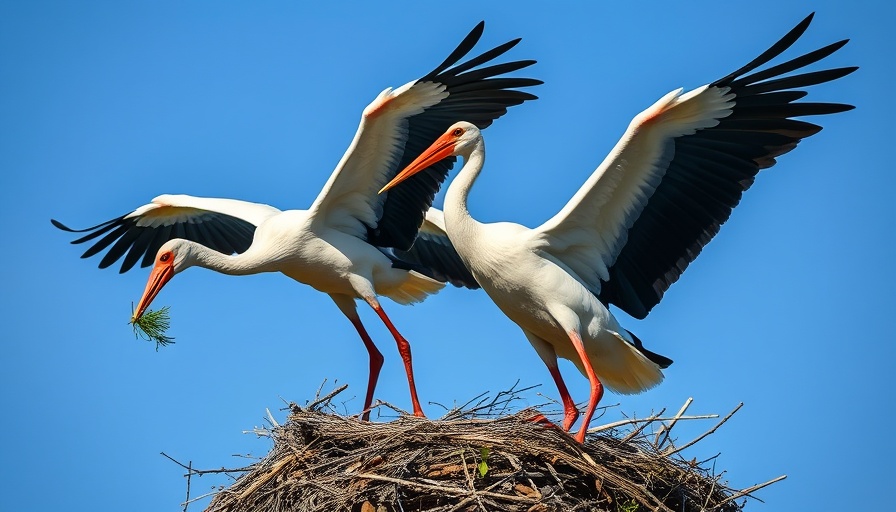
Could White Storks Make a Comeback in London?
The vision of white storks soaring through the sky of London may soon be a reality. Thanks to an urban rewilding group called Citizen Zoo, the capital is exploring the feasibility of reintroducing these magnificent birds, which have been absent as breeding species from British skies for centuries.
Understanding the Historical Context of White Storks
Once a common sight across the UK, white storks vanished due to habitat loss and hunting. Their majestic nests, which were often built on rooftops and trees, are now a fond memory. However, efforts are underway to change this narrative as conservationists like Citizen Zoo advocate for making London's urban landscape hospitable once again for these birds.
Inspiring Community Engagement for Wildlife Preservation
The initiative's foundation rests on community engagement, which is crucial for modern conservation efforts. Citizen Zoo is conducting a public survey to gauge Londoners' interest in welcoming white storks back. This initiative serves a dual purpose: obtaining valuable insights into public sentiment and educating citizens about the benefits of biodiversity. As Elliot Newton, a co-founder of Citizen Zoo, shares, “This is a bird that can thrive in urban landscapes, inspiring us about nature’s presence in our lives.”
Mapping Habitat Needs for Urban Wildlife
Understanding habitats is essential for this ambitious project. Habitat mapping across London will help identify suitable locations for potential white stork colonies. The first phase results will target 1,000 Londoners to create a representative sample, while the second phase will extend outreach to visitors, ensuring that everyone connected to the city can voice their opinions on this matter.
Making London a More Biodiverse City
The growing number of sightings — 472 records between 2016 and 2023 — indicates that the local ecology might support white storks. Projects like the White Stork Project in Sussex have demonstrated success in establishing colonies, providing a template for London to follow. By enhancing urban habitats, Citizen Zoo opens the door for more than just storks; the initiative could inspire a greater appreciation of wildlife and nature restoration.
Future Prospects: Creating a White Stork-Friendly London
Plans are already in motion to evaluate whether more habitats must be created to facilitate natural colonization or if a more hands-on approach, similar to the release strategies in Sussex, could work. Each positive step paves the way for a richer, more intertwined relationship between nature and city life.
Get Involved & Share Your Thoughts!
This is not just about white storks; it's about embracing wildlife in our urban spaces and nurturing the communities that celebrate them. Support for this initiative can foster local wildlife endeavors, like those related to the return of beavers in Ealing and the reintroduction of water voles in Surrey. If you’re passionate about wildlife and community-driven solutions, consider participating in the survey and sharing your views!
 Add Row
Add Row  Add
Add 




Write A Comment